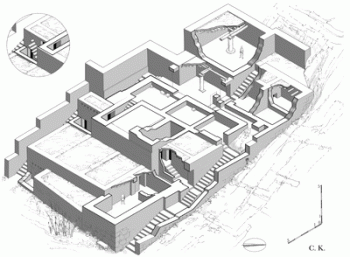American Journal of Archaeology | The Journal of the Archaeological Institute of America
You are here
The Klimataria-Manares Building Reconsidered
October 2005 (109.4)
The Klimataria-Manares Building Reconsidered
During the 1950s Nikolaos Platon excavated a Neopalatial (ca. 1700–1480 B.C.) building complex at the site of Klimataria, in eastern Crete, Greece. Since then many researchers have investigated Klimataria in an attempt to understand whether the building there is a villa or not. Villas are exceptionally elaborate edifices betraying a level of social power and authority immediately below the so-called Minoan palaces. The best examples may be found in central Crete. The eastern Cretan villas, such as Klimataria, are more atypical in terms of architectural morphology and use of space. Research has been hampered by the lack of final publications on many villa candidates, including Klimataria. This article wishes to fill the gap in the current knowledge of this edifice and reconsider its function and character within the Neopalatial milieu. Such reconsideration utilizes data collected during the authors’ fieldwork at the site in 2003. It places emphasis on the topography, foundation, and building materials and techniques and also the design, layout, and use of space. By so doing, it brings to light for the first time a contrast between a sophisticated design and a mediocre materialization of this design. In this respect, Klimataria may easily fall under the category of “country villa.”
The Klimataria-Manares Building Reconsidered
By Eleni Mantzourani, Giorgos Vavouranakis, and Chrysanthos Kanellopoulos
American Journal of Archaeology Vol. 109, No. 4 (October 2005), pp. 743–776
DOI: 10.3764/aja.109.4.743
© 2005 Archaeological Institute of America


